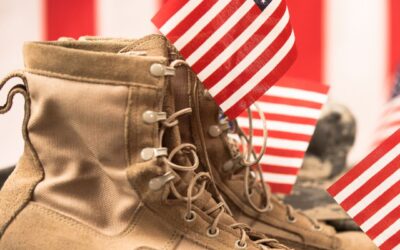The Brain Injury and Mechanisms of Action of HBO₂ for Persistent Post-Concussive Symptoms after Mild Traumatic Brain Injury (BIMA), sponsored by the Department of Defense, is a randomized, double-blind, sham-controlled trial of hyperbaric oxygen (HBO₂) in service members with persistent post-concussive symptoms following mild TBI, undergoing comprehensive assessments. The clinical EEG was assessed by neurologists for slow wave activity, ictal/interictal epileptiform abnormalities, and background periodic discharges. There is scant literature about EEG findings in this population, so we report baseline clinical EEG results and explore associations with other evaluations, including demographics, medication, neurological assessments, and clinical MRI outcomes. Seventy-one participants were enrolled: median age 32 years, 99% male, 49% comorbid PTSD, 28% with mTBI in the previous year, 32% blast injuries only, and 73% multiple injuries. All participants reported medication use (mean medications = 8, SD = 5). Slowing was present in 39%: generalized 37%, localized 8%, both 6%. No other abnormalities were identified. Slowing was not significantly associated with demographics, medication or neurological evaluation. Participants without EEG abnormalities paradoxically had significantly higher number of white matter hyperintensities as identified on MRI (p = 0.003). EEG slowing is present in more than one-third of participants in this study without evidence of associations with demographics, medications or neurological findings.
Baseline neurological evaluations in a hyperbaric trial of post-concussive syndrome.
Abstract: Standard neurologic examinations may not detect abnormalities in U.S. military service members with persistent post-concussive symptoms following mild traumatic brain injury. The Brain Injury and Mechanisms of Action of Hyperbaric Oxygen for Persistent...
Hyperbaric oxygen for persistent post-concussive symptoms: long-term follow-up.
Abstract: We report results of an observational cohort study investigating long-term follow-up in participants from two completed United States military trials of hyperbaric oxygen (HBO₂) for persistent post-concussive symptoms (PCS), as well as challenges in...
Linear analysis of heart rate variability in post-concussive syndrome.
Heart rate variability (HRV) represents measurable output of coordinated structural and functional systems within the body and brain. Both mild traumatic brain injury (mTBI) and HRV are modulated by changes in autonomic nervous system function. We present baseline HRV results from an ongoing mTBI clinical trial. HRV was assessed via 24-hour ambulatory electrocardiography; recordings were segmented by physiological state (sleep, wakefulness, exercise, standing still). Time, frequency, and spatial domain measures were summarized and compared with symptoms, sleep quality, and neurological examination. Median low frequency/high frequency (LF/HF) ratio exceeded 1.0 across segments, indicating prevalence of sympathetic modulation. Abnormal Sharpened Romberg Test was associated with 29% LF/HF decrease (95% CI [2.1, 47.7], p=0.04); pathological nystagmus associated with decreased standard deviation of electrocardiogram R-R interval (SDNN) index (25% decrease, 95% CI [0.8, 43.4], p=0.04). Increased sympathetic modulation was associated with increased anger scores (19% LF/HF increase with 5-point State Trait Anger Expression Inventory-2 trait anger increase (95% CI [1.2, 39.1], p=0.04)). A 13% HF increase (95% CI [2.1, 25.7], p=0.02) was observed with increased Pittsburgh Sleep Quality Index scores. These results support autonomic nervous system dysfunction in service members after mTBI.
TBI study questioned: Dr. Weaver response.
Abstract: Weaver, Lindblad, Wilson, Churchill, Deru, , , , (). TBI study questioned: Dr. Weaver response. Undersea & hyperbaric medicine : journal of the Undersea and Hyperbaric Medical Society, Inc, ;44(1):82-85. https://www.ncbi.nlm.nih.gov/pubmed/28768093
Sleep assessments for a mild traumatic brain injury trial in a military population.
Baseline sleep characteristics were explored for 71 U.S. military service members with mild traumatic brain injury (mTBI) enrolled in a post-concussive syndrome clinical trial. The Pittsburgh Sleep Quality Index (PSQI), sleep diary, several disorder-specific questionnaires, actigraphy and polysomnographic nap were collected. Almost all (97%) reported ongoing sleep problems. The mean global PSQI score was 13.5 (SD=3.8) and 87% met insomnia criteria. Sleep maintenance efficiency was 79.1% for PSQI, 82.7% for sleep diary and 90.5% for actigraphy; total sleep time was 288, 302 and 400 minutes, respectively. There was no correlation between actigraphy and subjective questionnaires. Overall, 70% met hypersomnia conditions, 70% were at high risk for obstructive sleep apnea (OSA), 32% were symptomatic for restless legs syndrome, and 6% reported cataplexy. Nearly half (44%) reported coexisting insomnia, hypersomnia and high OSA risk. Participants with post-traumatic stress disorder (PTSD) had higher PSQI scores and increased OSA risk. Older participants and those with higher aggression, anxiety or depression also had increased OSA risk. The results confirm poor sleep quality in mTBI with insomnia, hypersomnia, and OSA risk higher than previously reported, and imply sleep disorders in mTBI may be underdiagnosed or exacerbated by comorbid PTSD.
Traumatic Brain Injury and Attempted Suicide Among Veterans of the Wars in Iraq and Afghanistan
Abstract Studies of the association between traumatic brain injury (TBI) and suicide attempt have yielded conflicting results. Furthermore, no studies have examined the possible mediating role of common comorbid psychiatric conditions in this association. This study...
Chronic Diseases as Barriers to Oxygen Delivery: A Unifying Hypothesis of Tissue Reoxygenation Therapy.
Abstract: Modern medical practice has resulted in the accumulation of a growing number of incurable chronic diseases, many of which are inflammatory in nature. Inflammation establishes a hypoxic microenvironment within tissues, a condition of inflammatory hypoxia...
Erythropoietin in patients with traumatic brain injury and extracranial injury-A post hoc analysis of the erythropoietin traumatic brain injury trial.
Abstract: Erythropoietin (EPO) may reduce mortality after traumatic brain injury (TBI). Secondary brain injury is exacerbated by multiple trauma, and possibly modifiable by EPO. We hypothesized that EPO decreases mortality more in TBI patients with multiple trauma,...
Immediate and delayed hyperbaric oxygen therapy as a neuroprotective treatment for traumatic brain injury in mice.
Abstract: Traumatic brain injury is the most common cause of death or chronic disability among people under-35-years-old. There is no effective pharmacological treatment currently existing for TBI. Hyperbaric oxygen therapy (HBOT) is defined as the inhalation of pure...

